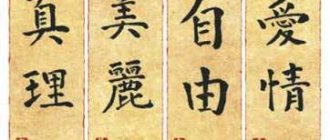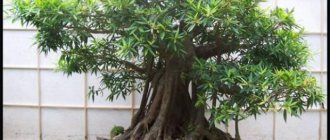What does a sakura tattoo mean? This question is often asked not only by those who plan to get such an image on their body in the future, but also by professional artists in large tattoo salons. This symbol is associated primarily with Japanese culture, the peculiarities of the worldview of the inhabitants of this country, which largely determines the meaning of the tattoo. The article will help you find out what is the difference between the designations of a branch, a flower and the sakura tree itself in a tattoo, find a meaning that is suitable for you and even a photo of a sketch of a sakura tattoo, and also understand such nuances of the sketch as shade, style and small details.
The history of cherry blossom tattoos
Japan is an amazing country with rather unusual cultural traditions, and sakura is its most popular, beautiful and, undoubtedly, important symbol. In Japan, there is even a special Hanami holiday, during which the islanders watch the flowering of this beautiful plant.
The sakura tree is a tattoo that was widespread in ancient times as a design on the body that only an emperor or prince could afford to get. The fact is that even the plant itself pleased the eyes of only the elite, because it grew near their houses and was not available for admiration by ordinary people. Usually, emperors applied a Japanese cherry tattoo design on their back as a sign of authority and justice, as well as responsibility for the country and love for it.
Later, tattoos with sakura could already be found not only on people in power, but also on some of his subjects, people close to the emperor.
Meaning of Sakura tattoo
Sakura is popular in the tattoo industry not only in its homeland, among the Japanese, but has also gained popularity almost everywhere. However, not everyone attaches special significance to images of the sakura tree; for most, it is simply a beautiful design that emphasizes the features of the figure. But the people of Japan still remain faithful to the old traditions, so now they have remained famous among the masses.
The drawing of sakura characterizes many aspects of both everyday life and features of human character. For example, here are some meanings of sakura:
- Refinement and grace typical of aristocrats. Once upon a time, not everyone had the opportunity to observe such a wonderful event as the blossoming of the Japanese cherry tree; only people of the upper classes had the right to do this. It even got to the point where it was completely forbidden for anyone of lower rank to look at sakura, and witnesses to such an event were soon sent to execution, because it was believed that the mob did not deserve such a right.
- Purity of soul and integrity. The feminine principle is characterized here; young girls with their bright thoughts had special authority.
- Grief and sadness. It turned out this way because among the people of Japan, white is the color that personifies mourning for those who have left this world.
- Symbol of feminine essence and sensuality. It began with the legend of the Blossoming One, so Japanese geishas, women of beauty and art, decorated their robes with sakura flowers, which aroused admiration in the eyes of others and often simply attracted attention.
- Fast flow of life. Just like cherry blossom petals bloom and then fall to the ground, so does life, at the beginning of everyone a beautiful and bright dawn awaits, but at the end of the journey a sunset awaits. However, many philosophers and mythologists saw something beautiful in such a life.
What does sakura tattoo mean?
Initially, sakura was a symbol of sublimity, power and even superiority over others. This fact is due to the fact that Japanese cherry grew only among very rich people and was indeed evidence of high financial status.
The sakura tattoo also has another meaning associated with the flowering of the plant. It can bloom for quite a short time, often only a few hours. Even a slight breeze can cause the petals to fall and the tree to stop flowering. Therefore, for many years, sakura has been associated with the transience and perishability of life, the inability to somehow influence the remoteness of the end of existence. A plant can represent the life cycle of all living things, beginning with birth and ending with death. However, there is another option - the transience of not only life, but also love or even the whole world.
A similar meaning of sakura tattoo can be found among Buddhists. For these believers, the plant is a symbol of the impermanence and frailty of existence. In Buddhist poetry one can often find an association of this image with bygone youth or love relationships.
There is another answer to the question of what a sakura tattoo means. The beauty of Japanese cherry blossoms evokes thoughts of youth, innocence and modesty. The symbol means tenderness, which is characteristic of flowers that can fall from a tree even from a slight gust of wind.
The plant also symbolizes fertility and prosperity. The fact is that the Japanese associate the blossoming of Japanese cherry trees with warming temperatures and the arrival of spring. When sakura blooms, the ground is already warm enough to plant rice, the main product in the diet of the country's inhabitants.
What does a sakura branch tattoo mean?
A tattoo with a sakura branch may have a slightly different meaning. If it blossoms, then such an image symbolizes the beginning of life’s journey, the desire for changes in life, the dawn of love and business, happiness and well-being. A fading branch, on the contrary, does not bode well. It denotes lost hopes and unfulfilled expectations, disappointment in a person or even in oneself. Sometimes such a tattoo can symbolize lost love or a broken heart.
Photo and meaning of a tattoo with a sakura flower
It is the Japanese cherry flower that in large-scale sketches acts as a symbol of female beauty and youth, its gentle personification. In addition, this element in the sketch can convey the idea of the fragility of a person, as well as the whole world, and be a reminder that every moment of life should be appreciated.
In general, the meaning of sakura tattoos for both women and men has an even more global meaning. Japanese cherry flowers are very small, and they disappear from the branches quickly, which symbolizes the fact that in the world there is much more evil than good, and every person experiences much more troubles than joys. It is quite difficult to maintain naivety in the conditions of modern life, and the tattoo supposedly denotes an innocent and gentle person, for whom it is as difficult to resist problems and troubles as it is for sakura to resist gusts of wind.
The symbolism of sakura in Japanese culture
Hanami represents a holiday to admire cherry blossoms. It is an officially approved celebration recognized throughout the world. Sakura blooms for a very short period of time - at least a couple of hours, and a maximum of two to three days, depending on weather conditions.
The flowers of this amazing plant are so fragile that they can scatter into many petals and disappear under the influence of even a slight gust of wind. It is for this reason that Japanese cherry has at all times been correlated with fleeting life and the perishability of existence.
Even in the state of the rising sun, the sakura flower is filled with sad symbolism. This is due to an old legend about a fearless and brave resident of a Japanese settlement, whose name was Sakura. His master severely beat him and humiliated him in every possible way, and Sakura, who did not want to put up with such a situation, turned to the powerful and fair Shogun for help, begging him for punishment for his offender.
To prove the beatings, Sakura brought his kids, on whose backs the prince’s whip was constantly running. But the owner of the settlement took revenge on Sakura with all cruelty: he tied his children to cherry blossoms and beat them to death...
From now on, cherry blossoms symbolize innocence and purity, and are also associated with suffering and grief.
Sakura tattoos were applied to the backs of Japanese princes and emperors to show how devoted they were to their state. And if the tiger symbol was added to the sakura symbol, then the tattoo symbolized power with justice.
Buddhists personify sakura with the frailty and instability of life. In her poems, she often talks about lost youth and love.
Sakura at the time of flowering symbolizes female youth and attractiveness. And its soft pink flowers evoke associations with the endless tenderness and harmony of a beautiful person who decides to get such a tattoo.
A branch with blooming cherry blossoms represents the path of life. In some cases, sakura can symbolize sustainability, because on this tree flowers appear much earlier than leaves. Sakura embodies the essence of Japanese philosophy.
Sakura, which has faded, is associated with lost hope and love.
Often the cherry blossom period is personified with human life. Sakura reminds us of the fact that every person is born, blossoms, then blossoms, experiences love, disappointment and ultimately dies, carried away by the cold wind...
In addition to everything mentioned above, the plant is associated with fertility and well-being. It is not for nothing that since ancient times the Japanese compared the beginning of cherry blossoms with the time of warming and the beginning of spring. During the flowering of the Japanese cherry tree, the earth has already warmed up sufficiently to plant rice - the main food product for the inhabitants of this state.
We can highlight a number of other characteristics of tattoos depicting sakura, namely:
- represents the life cycle: the phases of birth, flowering and withering;
- will tell about the transience of love;
- personifies sacrifice - payment for external beauty;
- symbolizes grief and sadness for those people who have already died (in this case, tattoos of a flowering tree are chosen);
- the desire of the tattoo owner to renounce the whole world (then only part of the sakura is tattooed on the body - its branch).
Japanese tattoo artists perform sakura tattoos with maximum authenticity. Absolutely all details are taken into account, even the most insignificant:
- number of flowers in the tattoo;
- features of the color palette (can vary from bright white to soft pink). At the same time, the white shade in Japan symbolizes death and sadness, and the pink one personifies the flowering of life itself;
- how strong the tree trunk is.
In other countries, cherry blossom design is not given as much attention. In most cases, its sketch is perceived in full, and small details are insignificant. The main principle is external attractiveness, and its meaning is no longer given so much meaning.
Location for cherry blossom tattoo on the body
The traditional place for a cherry blossom tattoo is the back. This part of the body was tattooed by emperors as a sign of their participation in high society. Nowadays, artists offer their clients other places for tattoos. They become the shoulders, arm, ribs, if the sketch is large. Men occasionally place a tattoo on their chest. In the case where the idea is a small design, it can be placed on the ankle, forearm or wrist. Sometimes very tiny sakura are stuffed behind the ear or under the collarbone. The designations of a sakura tattoo do not change depending on the placement or position of the tattoo.
Localization
Most often, a sakura tattoo, according to masters, looks best on the body in the area of the feet, back or side, but often people choose another location based on their own considerations or on the advice of the master. Localization of an image is an individual decision and depends on many factors, each of which must be discussed with the artist.
Did you know that some celebrities have cherry blossom tattoos? For example, TV presenter Roza Syabitova got herself a sakura tattoo. The location of this tattoo is shrouded in mystery. What is known is that terra incognita is, according to Rosa, in an area accessible only to the husband of the TV matchmaker.
Sakura settled on the girl's shoulder
Japanese Cherry Tattoo Colors
Blooming cherry blossoms in a tattoo can differ in a wide variety of shades of flowers. It is worth noting that their color significantly affects the meaning of the sketch. Thus, the Japanese associate white color with death, melancholy and sadness, so it is best suited for painting an image with the meaning of sorrow or mental pain. Pink color, on the contrary, means the dawn of life, flowering, change for the better.
Often, the meaning of a girl’s sakura branch tattoo changes significantly due to the fact that she followed fashion and tattooed a branch with scarlet falling flowers on her side, leg or back. The thing is, when these flowers (relatively) fall, they turn into a bright red pile of petals that resembles a puddle of blood. So a bright and beautiful tattoo with a gentle meaning becomes a symbol of bloody tears, hard battles, losses and even health problems or imminent death.
If you are just trying to find a color for a cherry branch tattoo from a photo and are not particularly interested in the meaning of this tattoo, we advise you to take a closer look at your skin tone. If you have pale skin, it is better to choose a design with pink flowers, and for those with a beautiful tan, you can recommend a design in a white shade.
What does a sakura tattoo mean for a girl and a guy?
An interesting fact - a tattoo with an oriental cherry is not recommended for young girls; it is suitable exclusively for adult representatives of the fair sex. The fact is that the meaning of sakura tattoos for young girls does not bring any of the pleasant moments described above. Japanese cherry on the body will only bring rapid old age and make youth as fleeting as the flowering of a tree. For adult and mature women, a tattoo, on the contrary, can prolong youth and give a special charm.
Photos of sakura tattoos in different styles
Sakura is considered the main motif in the traditional Japanese tattoo - irezumi. This symbol is often present in sketches of another popular oriental style, oriental. This technique is more common among European artists, and in general is more appreciated by connoisseurs of tattoo culture. Oriental exists as if on the border of Eastern and Western cultures and takes into account the merits of both. Therefore, it will be easiest to make a Japanese cherry blossom tattoo both beautiful and meaningful with the help of this style. A good oriental is necessarily colorful and differs from other directions in its symmetry, clarity of shapes and lines.
Another popular, but already European, technique for cherry blossoms can be considered watercolor. In this option, women's cherry blossom tattoos will undoubtedly look best. The peculiarity of the style is a certain sophistication, tenderness and at the same time carelessness, which are created with the help of “paint drips”. This option can make the drawing more interesting and vibrant, and will help avoid boring common sketches.
In the photo of the girls’ sakura tattoo, you can see that there is another option for the design - minimalism. This neat style involves a small, discreet sketch; it is best suited for sensual, secretive people who want to hide the tattoo from prying eyes.
Men usually focus on such techniques as the already mentioned oriental, as well as realism and black and white tradition. They allow you to make a sketch quite interesting, but at the same time very restrained and neat, to some extent even courageous.
Sakura tattoo: sketches, styles and original solutions
Once the meaning of the tattoo is known, it’s time to start choosing a design and finding an artist. In order to decide on a design, you can find many options on the Internet or consult a tattoo professional. He will not only select the color, but also determine all the subtleties of the work and the style of the future body image.
Styles that are best for cherry blossom tattoos:
- Watercolor - allows the flower to look as delicate, sophisticated and attractive as possible. In this style, the edges of the cherry blossoms will be slightly blurred, and delicate tones will prevail over realism. The outline of the tattoo is black, and the colored elements extend beyond the outline with a blurry effect.
- Black and white sakura - a tattoo that is more typical of men, will demonstrate their restraint and at the same time excessive sensuality.
- Minimalism is the best option for girls who want to see a small tattoo on their body, in which all the details look appropriate and organic. The ideal sketch is a small sakura branch on a leg or arm.
- Oriental - oriental style. In addition to sakura, you can use characters from Japanese mythology or hieroglyphs. The best option for fans of oriental culture and traditions.
A tattoo with an image of sakura can be either a separate element or part of a composition. In addition, sakura is often combined with other items, popular among which are:
- Hummingbird – femininity, sexuality and tenderness.
- Butterfly – brightness, love and rebirth. At the same time, you need to be careful with such an image, because the butterfly is a symbol of accessibility.
- Hieroglyphs - the meaning of the tattoo depends on the translation of the symbols.
Other elements in a sakura tattoo
From the photo of the tattoo with a sakura branch, it is clear that this sketch is not often complemented by other elements. Usually this is an independent drawing with a specific meaning. As for the entire tree, men weave abstract geometric patterns into its flowers. Sometimes the plant is also decorated with a background of mountains or rivers, mythical or simply wild animals, carps and other popular Japanese motifs. The idea of combining sakura with a bird, for example, a hummingbird, a butterfly, peony or lotus flowers, or a hieroglyph, looks interesting.
How to choose an artist for a Japanese cherry blossom tattoo?
In Japan, not only the color of the design or the hieroglyphs located nearby on the sketch can greatly influence what a sakura twig tattoo means. For the craftsmen of this country, the number of flowers, their location, and sometimes even the shape of the petals are also important.
If you want to depict a design on your body as accurately as possible and put one of the above-described meanings into it, we advise you to take a responsible approach to the choice of the artist; ideally, he should even be a professional in the ancient art of Japanese irezumi tattooing. However, in European culture, artists do not attach much importance to such trifles, and their works actually do not carry such a deep meaning as tattoos from Japanese artists. The photo of the cherry branch tattoo shows that in different versions of the sketch, the flowers are not always carefully drawn: some small details or other features that are important for Japanese experts, but not for ordinary connoisseurs of tattooing as an art, are forgotten.
Think about what goal you are pursuing - to make a tattoo your symbol and even to some extent your patron, or simply to decorate yourself with a beautiful flower - and, based on this, choose a master.
Hello my name is Andrew. Since 2007 I have been interested in Feng Shui. I actively implement and apply the acquired knowledge in practice. I will be happy to answer all your questions.
In this article you will learn:
One of the national symbols of Japan is sakura. The tree also grows in the Himalayas, Korea and China, but its main place of birth and growth is Japan. Cherry blossoms begin to bloom in the land of the rising sun on the southern island of Okinawa. Flowering spreads across all the islands and ends in the north of the country on the island. Hokkaido.
Vsevolod Ovchinnikov – Sakura Branch
Vsevolod Ovchinnikov
Sakura branch
Their tastes
Pages from the diary
Footsteps were heard behind the thin sliding partition. Stepping softly with their bare feet on the mats, several people entered the next room; judging by their voices, they were women. When they were seated, they quarreled for a long time over places, conceding to each other the most honorable things; then they fell silent for a minute while the maid, clinking bottles, uncorked beer and placed snacks on the table; and they all started talking again at once, interrupting one another.
It was about cutting fish, about making money in the fishery, about the machinations of the receiver, for whom it is difficult for them, widows, to find authority.
I lay behind the paper wall, eagerly listening to every word. After all, it was the desire to plunge into the life of the Japanese outback that brought me to this village on the far tip of the island of Shikoku. Tomorrow before dawn, around three in the morning, the fishermen had to go out fishing. I started all this in the hope that I would be able to live with a fishing family for a couple of days. But it turned out that even in such a wilderness there is an inn. They left me alone in the room and told me to go to bed early so as not to oversleep.
How can you sleep with such proximity! I tossed and turned on the mattress, straining my ears, but the meaning of the conversation in the next room kept escaping me. No one in my presence would talk about life with such frankness as these women from the industry who had gathered to celebrate their pay day. But, perhaps, it was that evening that I realized what an impenetrable wall the inner world of the Japanese was still hidden from me. What good was it to understand their language - or rather, words and phrases, if at the same time I felt with bitterness that the very structure of their thoughts was incomprehensible to me, that their soul was still in the dark for me.
There was, however, a moment when everything suddenly became clear and close, when drunken female voices harmoniously picked up a familiar melody:
...And while behind the fogs the boy could see, On the window in the girl's room, the light was still burning...
How did this song reach them? Did their husbands bring her back from captivity in Siberia before a fierce storm sealed the fishermen’s fate? Have these women been widowed since the war and heard this song about loneliness, waiting and hope from others, filling it to the brim with their insatiable longing?
Beer bottles clinked behind the partition again; The conversation either died down or became lively. But I had already hopelessly lost track of her and was thinking about my own.
Of course, widows are widows everywhere. But people here not only speak differently; they feel differently, they have their own approach to life, different forms of expressing worries and joys.
Will I ever be able to figure all this out?
Even as a child, I read that evening Paris smells of coffee, gasoline, and perfume. Just try to describe what a busy street in a Japanese city smells like in the evenings!
At the corner of an alley, completely lit with neon advertisements of drinking establishments, an old woman perched herself with a brazier. Twisted sea shells are laid out on the coals with their bells facing up, in which something gray gurgles. Next to flat dried cuttlefish and some other fragrant sea food, incredibly ordinary chicken eggs are baked in the ash.
Two steps away is a machine familiar from Beijing, which mixes chestnuts in the hot sand.
But the smell of baked potatoes, reminiscent of pioneer fires. It comes from a complex structure similar to a war chariot. There is also a brazier with coals, and above it, like carcasses on hooks, long sweet potato tubers are hung. Choose and admire how they will bake them in front of you.
A female figure fluttered out of the Stardust Cabaret. Perched on the edge of some box so as not to wrinkle her silver gauze dress with an incredible cutout on the chest and back, the girl, squinting her eyes like a child with pleasure, hastily eats a steaming potato. Meanwhile, the old merchant woman carefully covers her bare shoulders with something - either from the evening cold, or from the gaze of passers-by.
I was at a festival of popular ensembles today and came away with an unforgettable impression of what I saw and heard – not so much on stage as in the hall.
The creators of the most fashionable, best-selling records compete here at an incredible pace. The soloist is just hitting the final note, the end of the drummer’s frenzy is not yet in sight, when the moving floor is already carrying the orchestra members backstage and immediately pushes out the next ensemble, which is also playing with all its might, but with something of its own.
Newly-made idols of the year replace each other with kaleidoscopic speed. Not a second of respite from the drumming and electric guitar chords.
But the cascades of noise cascading from the stage are nothing compared to the explosions of fury that shake the hall every minute. I never thought that it was possible to squeal and stomp your feet with such frenzy for two hours straight.
Are these really the same Japanese girls who are reputed to be examples of grace and restraint, impeccable control over the manifestation of their feelings?
Here is a crowd of completely distraught fans rushing to the stage, pushing each other. Dozens of hands with gifts reach out to the long-haired idol. Some girl squeezed forward with a garland of flowers, but could not reach the singer. He generously takes a step to the very edge of the ramp and bends down slightly.
But at the very moment when the fan finally manages to throw flowers around his neck, dozens of hands dig into the garland. The lassoed idol loses his balance and falls straight into the crowd of his screaming fans, who, like a school of predatory fish, begin to literally tear him apart in order to get at least some souvenir.
Having watched my fill of such scenes, I added one more item to the list of inexplicable paradoxes of Japan.
It would seem that today’s Japanese youth, so susceptible to the extremes of Western fashion, have already completely moved away from the morals and customs of the older generation.
And yet, when the time comes for the wedding, each of these frantically squealing, disheveled girls again turns into a model of meekness, humility and submission. Having become a bride, it is as if she again swears allegiance to the laws of her ancestors. This is manifested not only in the fact that, contrary to any fashion, her outfit and hairstyle will be the same as those of the beauties whom Utamaro once depicted in his engravings [1].
It is much more important that this loyalty to the precepts of antiquity is manifested in obedience to the parental will. After all, this is the same generation whose tastes are so closely watched and whose whims are selfishly indulged by record producers, owners of television studios, cinemas, and model houses; the same generation that, it would seem, chooses its own idols and overthrows them - this generation continues to put up with the lack of the right to choose in the most important issue for a person - the question of who will become his life partner, the father or mother of his children .
And no matter how striking the ultra-modern features in the appearance of Japanese youth, two-thirds of marriages in this country are still carried out by matchmaking, that is, by the choice of parents.
Everyone in Japan, from schoolchildren to elderly peasant women, is used to traveling collectively, walking in an orderly column behind the guide’s flag. The only exceptions are newlyweds. These people behave distinctly aloof and busily leaf through books like test scores, from which they need to tear out coupons for visiting a museum, park or temple, for a train, a bus, a hotel, and so on. The tourist office supplies them with such booklets so that, having paid in advance for the entire honeymoon trip (usually three to five days), they can no longer think about money.
You can immediately distinguish the newlyweds by their camera tripod, which they carry with them everywhere to take pictures together against the backdrop of landmarks. And although at each such place several newlywed couples certainly meet, for some reason you never see them taking pictures for each other on the basis of reciprocity.
However, newlyweds have an even more characteristic sign. Everything on them: from the hat on the bride to the shoes on the groom - is always immaculately new, even if inexpensive, but certainly fresh from the store.
Three couples of newlyweds were already traveling in the express carriage with me when I noticed the fourth. A large crowd saw them off on the platform, apparently immediately after the wedding ceremony.
The train started moving. The bride, stately and unusually tall for a Japanese woman, took off and neatly folded her coat, touched her lush hair with her hand and sat comfortably by the window.
Next to her, the groom looked frail. Crimson after the wedding feast and excitement, he felt embarrassed: he fumbled aimlessly in his pockets, turned his head, straightened his tie every now and then, and finally lit a cigarette.
Apparently, this was the first time they were alone with each other, and the prolonged silence weighed heavily on both of them. So she looked at him friendly, and he came to life, blossomed, and suddenly, as if enlightened, he climbed upstairs for his travel bag. He pulled out a stack of paper sheets, similar to diplomas that we give to the winners of sports competitions, or to bonds: red, blue, green patterns framed the inscription in the middle.
What does sakura mean?
On the branches of Japanese cherry trees, leaves appear later than flowers. The sight of blossoming petals is associated with the awakening of nature, rebirth, and the birth of a new life. The five petals of the flower help us remember the five fundamental aspects of life: peace, joy, health, luck and prosperity.
Sakura symbolizes the warmth of the sun and summer, tenderness, affection and love, fidelity, and feminine beauty. Cherry blossoms can be used as a talisman that will attract new relationships, bring good luck in love affairs, and strengthen family ties.
In ancient times, the tree was considered a symbol of power and superiority. Cherries grew only near the houses of aristocrats and the rich and were considered an indicator of wealth. The image of the symbol in the form of a tattoo was applied to the body only by princes and emperors as a sign of power.
The cherry blossom period is short. The flower is fragile and can fall apart due to wind or bad weather. Therefore, the Japanese cherry tree also symbolizes the transience of life.
A beautiful legend about the fragility of life
For the Japanese, sakura and its blossoming are a whole philosophy. There are many stories and legends about the tree, including sad ones, revealing one or another meaning and symbolism. A short legend explaining the history of the holiday of admiring the short period of flowering of the rose tree.
In Japan, sakura is a very significant symbol; it represents all the most beautiful things that can be found in this world. Delicate oriental cherry blossoms are associated with female beauty, love, the birth of children, renewal and rebirth.
- According to Feng Shui, Sakura is a talisman that attracts happiness, harmony and prosperity, and its five petals collected into a bud are a sign of the unity of spiritual and carnal joys.
The meaning of sakura in eastern culture
Beautiful legend
A beautiful Japanese legend tells about the God of Heaven, who decided to marry one of the daughters of the God of Earth. The older girl was strong as a rock, and the younger one was as beautiful as a wild cherry blossom. It is clear that the groom chose the second without hesitation, but thereby offended his loving father. As a result, he agreed to the marriage, but cast a spell on all the offspring of the married couple:
- From now on, people's lives are full of bright emotions, but short-lived - like sakura buds that are torn from the branches by a careless breeze.
Symbol of the transience of life
In modern tradition, sakura is a symbol of the transience of life. In spring, wild cherry blossoms remind people that happiness, youth and love cannot last forever, so we should enjoy every minute.
- To remember this, Japan annually celebrates Hanami, a special holiday that involves admiring cherry orchards, meditating, and thinking about eternity.
The Legend of Blooming
One day, the proud and formidable god of the mountains invited the grandson of the Sun goddess named Ninigi to marry one of his daughters. The eldest was called High Rock, she did not shine with beauty, but she was reliable and wise. The youngest daughter's name was Blossoming; she was beautiful and fragile, like a delicate flower.
The stern god, deep down in his soul, still hoped that Ninigi would choose High Rock, then he would give Ninigi’s descendants a long and stable life. But it is not surprising that young Ninigi chose his youngest daughter, Blooming, as young as himself, as his wife. The god of the mountains became angry and said that from now on the life of the descendants of Niniga and Blossoming would be as beautiful as his youngest daughter, but also fleeting, like cherry blossoms.
Based on this legend, the Japanese believe that the line of emperors originates from the young god Niniga and his beautiful wife Blooming.
What does sakura mean in feng shui in the house?
Who is it suitable for?
For residents of the Land of the Rising Sun, cherry flowers are a very pleasant and symbolic gift, and its presentation is a wish for prosperity, longevity and peace. Such gifts are especially in demand at weddings; they are often brought to young spouses to emphasize their respect and deep friendship.
- For a couple, planting sakura in the yard is a favorable omen, promising a life of harmony and love.
Where to place it?
Since it is not so easy to grow sakura in an ordinary modern apartment, you can get by with its symbolic image: embroidery, photography, painting.
- According to Feng Shui, such a talisman should be placed in the South-West, in the Marriage Zone.
In this case, he will act as an activator of the love Sector - he will help build a harmonious union based on trust, preserve passion and romance for many years.









